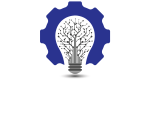Reinforcing Your Business Foundation
To help companies find more customers and grow their revenue, we start with a discovery process, looking at the four foundational pillars of any successful business.
The Successful Business Foundation
Market Gap
Clarify Product-Market-Fit: What is it that we have that we think others will want? How are they currently solving their problem, or do they even recognize it is a problem? And how compelling of a challenge is this for them? How motivated are they to solve the problem? Equally important to identifying and understanding the gap, is to understand the ecosystem in which the potential client operates today. How are they interacting with business partners and their clients, what business requirements or governmental requirements might affect how they attempt to close the perceived gap. Lastly – understanding how the money flows in the client’s ecosystem is critical – who gets paid for what activity, and who might favor the existing paradigm instead of closing the gap that you’ve identified.
Value Proposition
Assessing Value Proposition – is your product/service compelling enough to make potential clients want to abandon what they’re doing today to begin using your solution? What problem is really being solved? How willing are they to use your product… and how much are they willing to pay for your product? Quantify non-product attributes of your client’s use case… and determine if these attributes can contribute (or detract from) the value of your product. It could be packaging, ease of use, technical support, durability/longevity… or financing options, ease of procurement, try-before-buy options, etc. Because a Value Proposition is defined by a potential client’s view of how your product or service solves their problem, this assessment can vary wildly from market to market. It can even vary within a single market due to geography, time, or other seemingly minor factors.
Ideal Client
Identifying your Ideal Client and determining which segments of potential clients to target first. Which are the clients that have the most compelling problem to be solved, which of them have the most financial stake in solving the problem, and which segments of potential clients can you reach with relative ease? Not just a company profile, but the stakeholders within that organization. What are the personas that are directly involved with specifying, using, and purchasing your product/service? How might their motivations to buy conflict with each other, or with your product’s benefits? Are these target segments able to generate enough revenue for you to keep you in business?
Go-to-Market
After the above foundation has been laid, then develop your Go-To-Market Strategy, which is your marketing & sales plan. With the Ideal Client in your targeted segment as being your primary audience, how do you engage with them and explain how your product/service can solve their problems or reduce their risk or increase their efficiency? Your messaging must align with your Value Proposition, and should address the concerns and challenges faced by your personas with your Ideal Client. Avoid the temptation to focus on the features of the product or service, and instead focus on how the client’s environment will change in a positive way.
Many companies struggle to align their GTM strategy – they often create a marketing or sales plan before establishing a strong foundation of Product-Market-Fit, Value-Prop, and Ideal Client. This leads to marketing messages that don’t resonate with potential customers, marketing that is aimed at market segments or client types that don’t match your ideal client, and sales efforts that have very low close rates and often fall short of company revenue goals.
How does Tech Growth Strategies work with me?
We customize our engagement to fit the needs of your organization. This can range from a single workshop to placing a fractional marketing or strategy leader in your business for a few months or years. The difference between services is typically what level of assistance is needed – simply guidance and advice, or rolling up our sleeves and helping you execute the work.
- Workshops
- Monthly Advisory Services
- Consulting Engagement
- Fractional Employee
The secret power to each of these approaches is that you gain the value of decades of experience, proven methodologies, and experienced practitioners all at a fraction of the price of a full-time employee.
